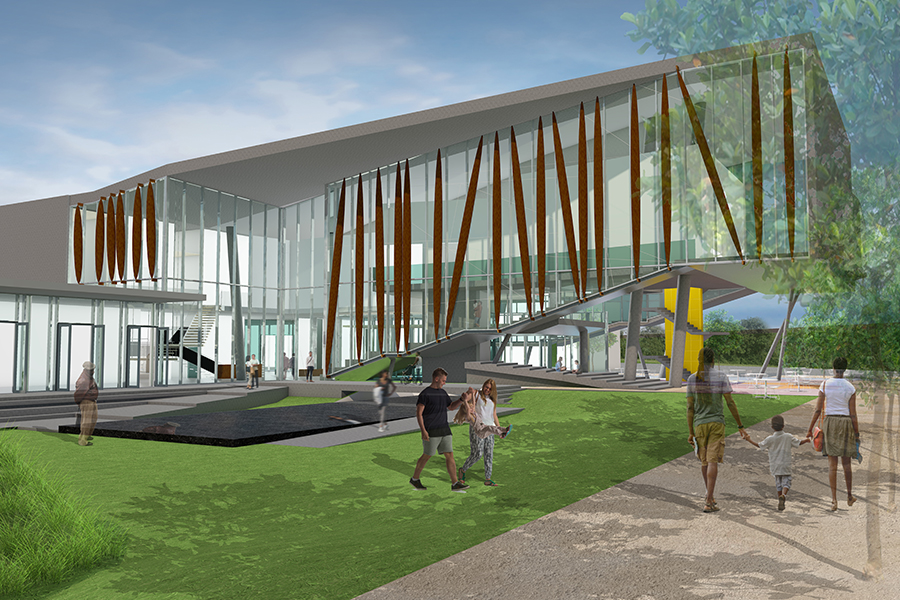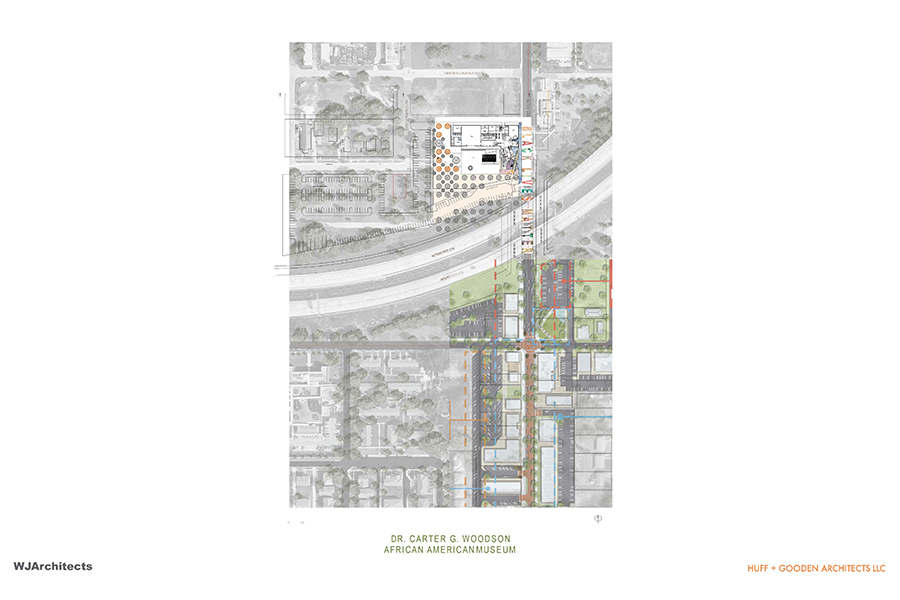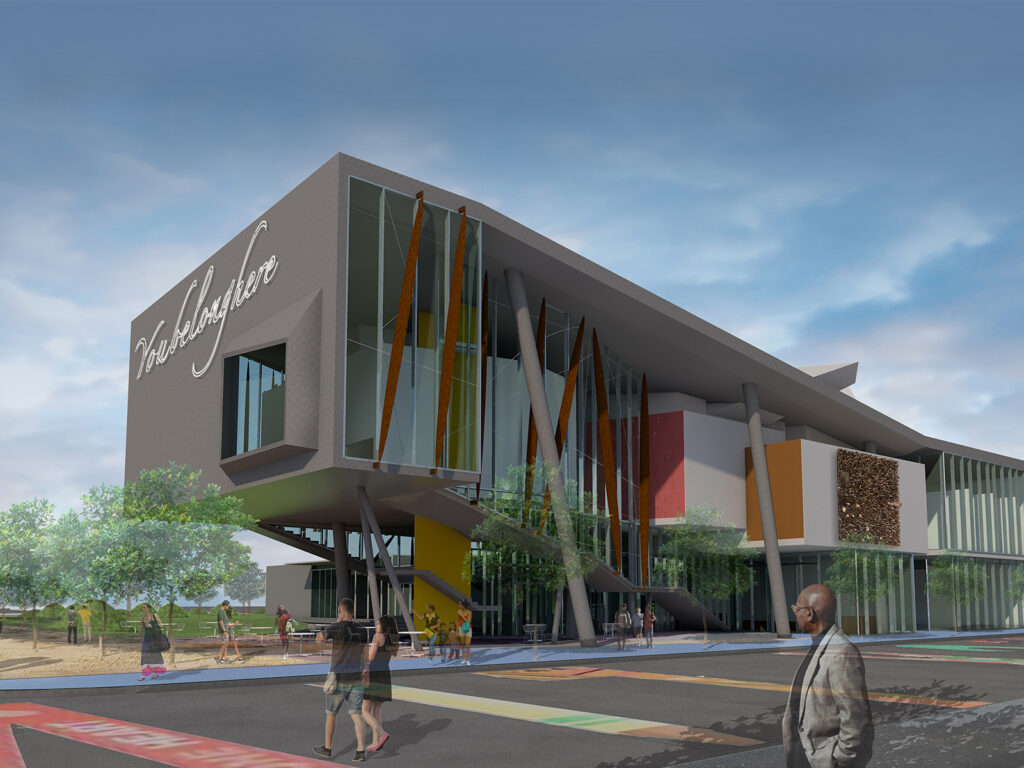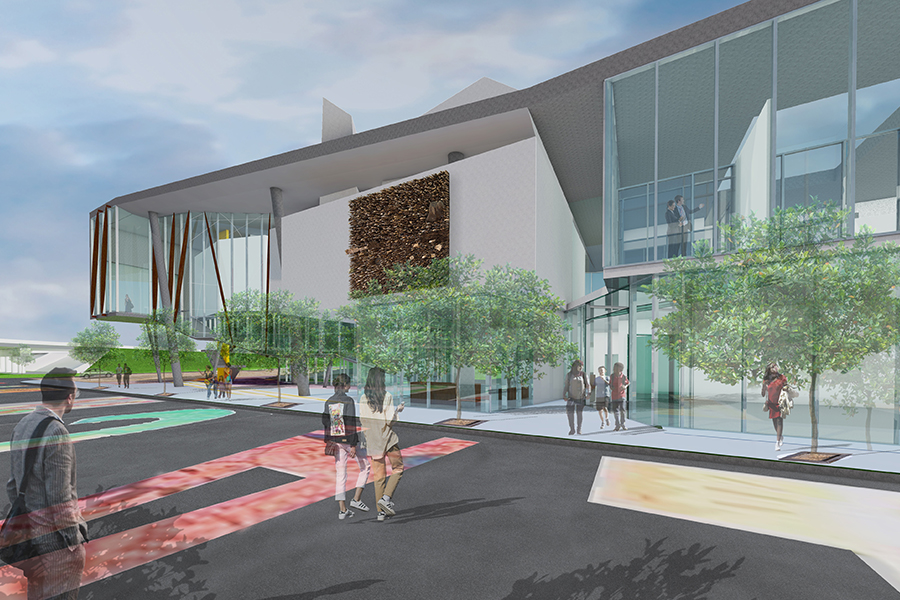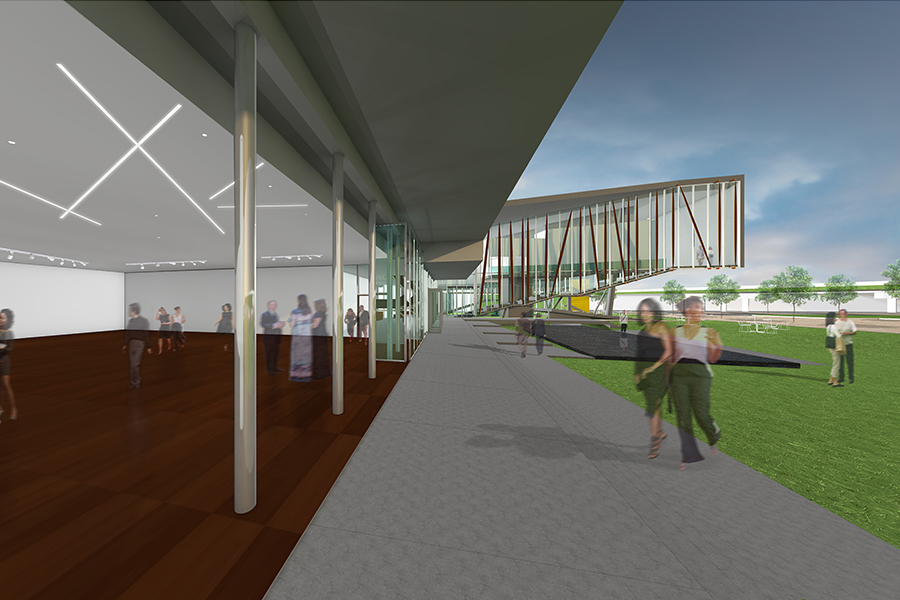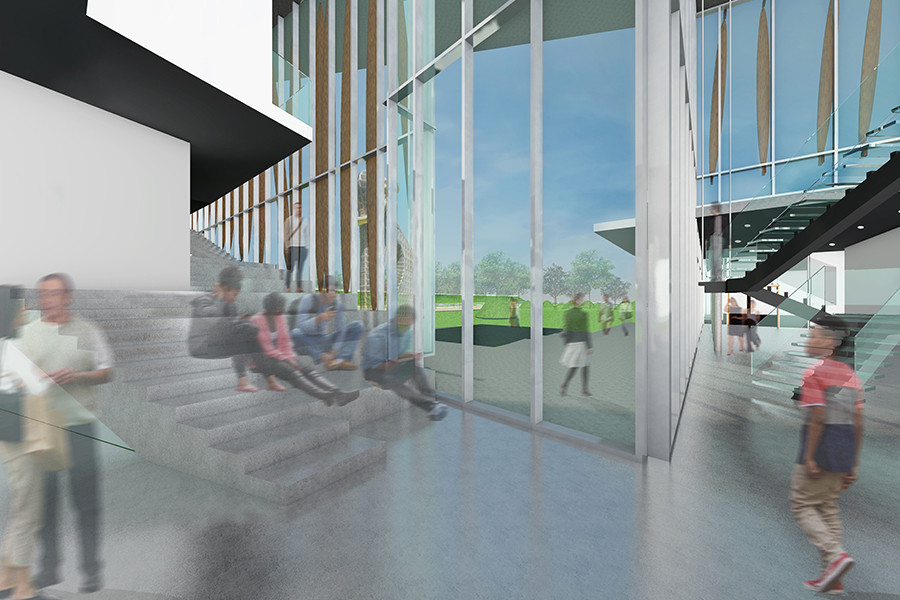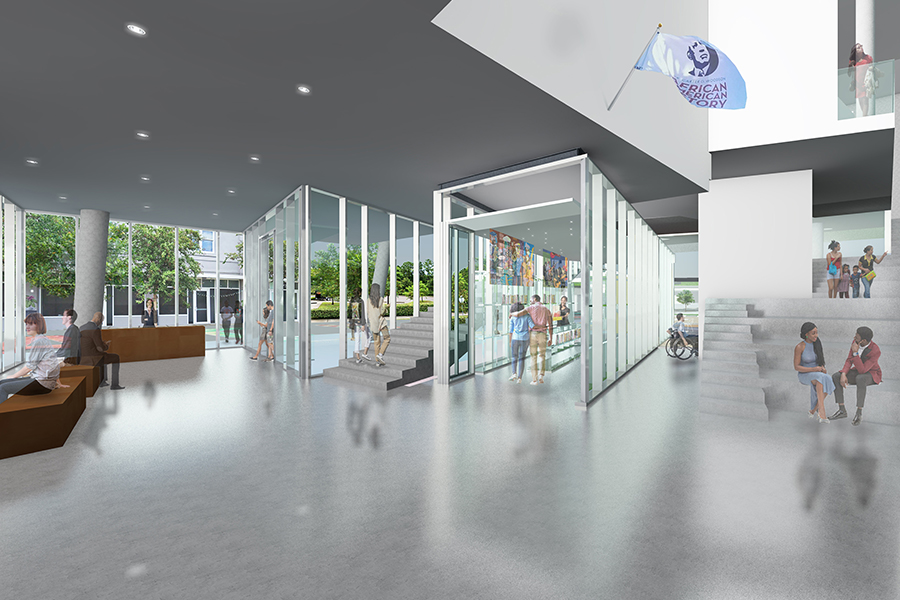
Dr. Carter G. Woodson African American Museum
St. Petersburg, FL
The Story
The Dr. Carter G. Woodson African American Museum of Florida is located in the Jordan Park neighborhood of St. Petersburg, Florida just off the historic 22nd Street South (“The Deuces”) corridor home to the Manhattan Casino — that attracted such celebrities as Louis Armstrong, LaVerne Baker, Count Basie, Cab Calloway, Ray Charles, Duke Ellington, Ella Fitzgerald, Dizzy Gillespie, as well as the Ink Spots—, as well the once thriving African American business district and nerve center of the Civil Rights movement in St. Petersburg.
The design for the new Woodson expands the footprint of the existing building and takes its inspiration from the artwork by renowned African American painter and collagist Romare Bearden entitled Jazz Village, (1967) as well as the avant-garde jazz film Black and Tan (1929) starring jazz legend Duke Ellington and Fredi Washington.
The design resituates The Woodson within a lush landscape including a grove of Oak trees that provides outdoor gathering and seating areas at the north side of the building and new multi-functional courtyard at the south side of the building that extends to the existing Legacy Garden. Primary spaces at the ground floor include a Visitor’s Center; the Equity Center including seminar room and library; a flexible interior Event Space; and Gift Shop. From the ground floor, and elongated feature stair extends the entry processional from the Oak Grove; through the entry terrace; and to the exhibitions spaces at the second floor. The exhibition spaces include a temporary gallery as well as two galleries for permanent exhibitions. Each gallery is designed to receive abundant natural lighting through skylight monitors oriented to receive desirable northern daylight for viewing artwork. The galleries are surrounded by a large outdoor sculpture garden that cantilevers above entry terrace and courtyard below while providing shading as well as additional multi-functional exterior space.
This project was a collaborative effort with Huff + Gooden Architects.

